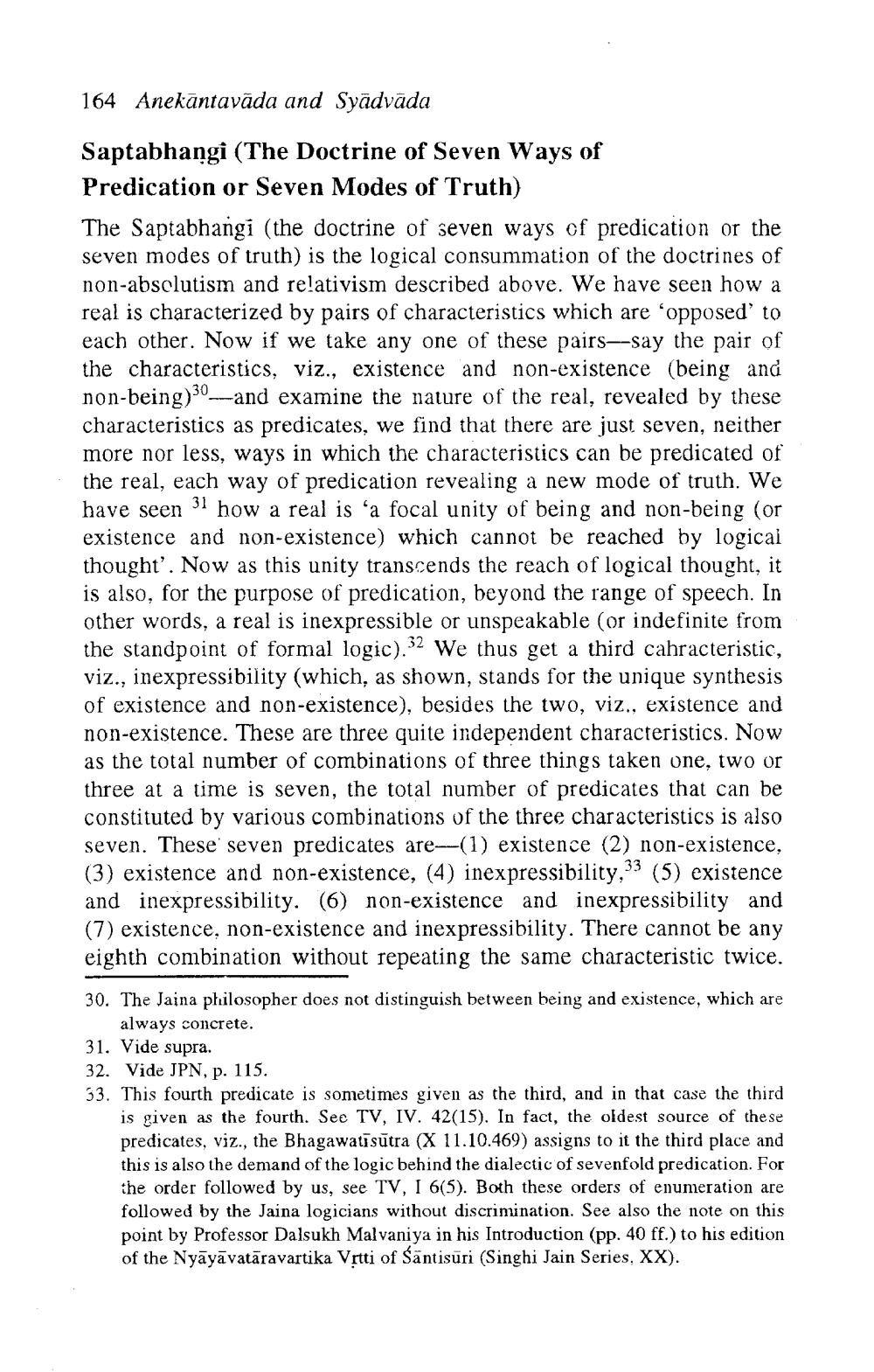________________
164 Anekāntavāda and Syädvāda
Saptabhangi (The Doctrine of Seven Ways of Predication or Seven Modes of Truth) The Saptabhangi (the documlile 0
(the doctrine of seven ways of predication or the seven modes of truth) is the logical consummation of the doctrines of non-absolutism and relativism described above. We have seen how a real is characterized by pairs of characteristics which are 'opposed to each other. Now if we take any one of these pairs-say the pair of the characteristics, viz., existence and non-existence (being and non-being)30-and examine the nature of the real, revealed by these characteristics as predicates, we find that there are just seven, neither more nor less, ways in which the characteristics can be predicated of the real, each way of predication revealing a new mode of truth. We have seen 31 how a real is 'a focal unity of being and non-being (or existence and non-existence) which cannot be reached by logical thought'. Now as this unity transcends the reach of logical thought, it is also, for the purpose of predication, beyond the range of speech. In other words, a real is inexpressible or unspeakable (or indefinite from the standpoint of formal logic).32 We thus get a third cahracteristic, viz., inexpressibility (which, as shown, stands for the unique synthesis of existence and non-existence), besides the two, viz., existence and non-existence. These are three quite independent characteristics. Now as the total number of combinations of three things taken one, two or three at a time is seven, the total number of predicates that can be constituted by various combinations of the three characteristics is also seven. These seven predicates are-(1) existence (2) non-existence, (3) existence and non-existence, (4) inexpressibility, 33 (5) existence and inexpressibility. (6) non-existence and inexpressibility and (7) existence, non-existence and inexpressibility. There cannot be any eighth combination without repeating the same characteristic twice.
30. The Jaina philosopher does not distinguish between being and existence, which are
always concrete. 31. Vide supra. 32. Vide JPN, p. 115. 33. This fourth predicate is sometimes given as the third, and in that case the third
is given as the fourth. See TV, IV. 42(15). In fact, the oldest source of these predicates, viz., the Bhagawatisūtra (X 11.10.469) assigns to it the third place and this is also the demand of the logic behind the dialectic of sevenfold predication. For the order followed by us, see TV, I 6(5). Both these orders of enumeration are followed by the Jaina logicians without discrimination. See also the note on this point by Professor Dalsukh Malvaniya in his Introduction (pp. 40 ff.) to his edition of the Nyāyāvatāravartika Vrtti of Säntisuri (Singhi Jain Series, XX).




